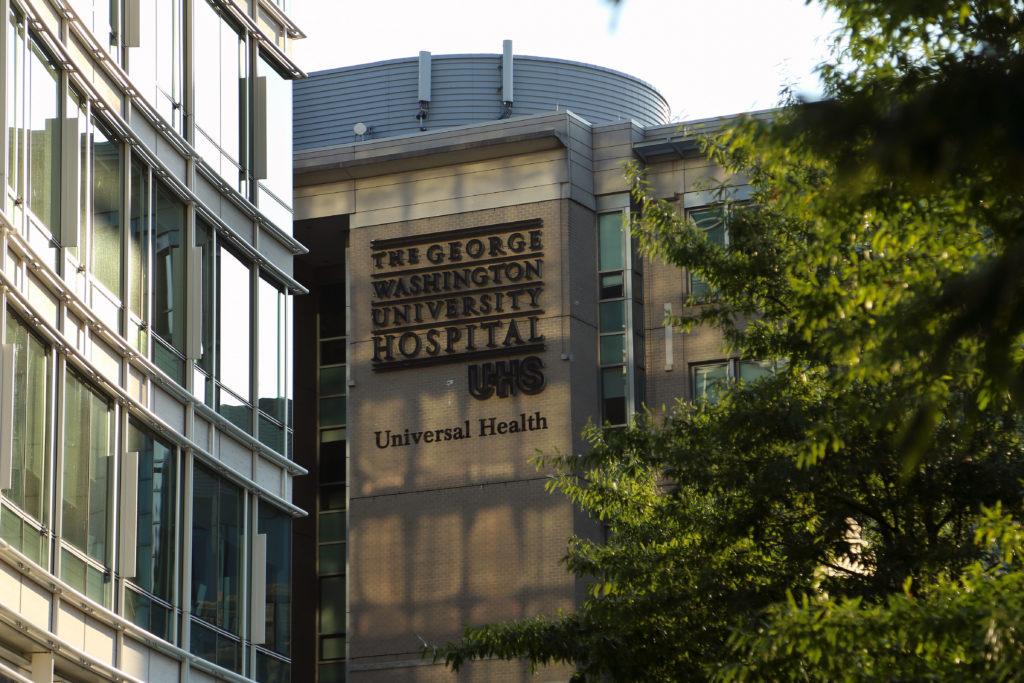Updated: Nov. 15, 2018 at 12:39 p.m.
The GW Hospital has performed the most robot-assisted surgeries in the region for about the past 15 years.
At least nine doctors who use the robotic technology have performed 3,000 surgeries over that time period, according to a medical school release. Doctors who use the robotic technology said the equipment allows surgeons to perform minimally invasive procedures that allow for quicker recovery.
Keith Mortman, the chief of the thoracic surgery division, said the surgeon using the robotic assistance sits at the surgeon console a few feet away from the patient and the operating table and uses different hand and foot controls to manipulate up to four different arms of the robot.
Mortman said one robotic arm holds a camera in place over the incision, which creates “superior visualization” of the surgery they are performing.
“When I do these cases robotically, I don’t need to rely on the assistant to do that because I’m controlling the camera and I can just lock the camera in place, and it will not move until I move it,” he said.
Mortman said the robotic technology has “seven degrees of freedom,” which allows greater rotation than the human wrist because of its jointed tips and 360-degree motion capabilities.
“If there’s a surgeon perhaps who tends to have a shaky hand, had too much coffee that morning, the robot actually compensates for that so that when our hands and fingers and wrists are moving it has that tremor control so that tremor is not transmitted to the instrument,” he said.
He said patients from all over the United States come to see doctors at the hospital because the center employs specialists who use the “cutting-edge” technology.
Thomas Jarrett, the chair of the urology department, said traditional surgeries require larger incisions than surgeries assisted by robots, but traditional surgeries have remained the “gold standard” because doctors can use three-dimensional vision, have tactile sensation and have full control of the situation.
“The problem for the patient is that when you have to make big incisions, you’re cutting through lots of muscles, which hurts and also cosmetically it may not be as optimal,” Jarrett said. “A lot of people don’t heal up well, so it leaves you a lot of risks for wound infections and post-operative hernias.”
He said doctors aim to ensure that the outcomes of robot-assisted surgeries are equal to the outcomes of non-robot assisted surgeries. Jarrett added that hospitals should identify which areas of surgery benefit the most from robotic technology, as many procedures – like replacing or removing a patient’s kidney – are best done by hand.
“You don’t need this expensive technology for everything – there are certain places where it has a definite role and an advantage,” he said.
Vincent Obias, the chief of the division of colon and rectal surgery and an associate professor of surgery at the medical school, said because robotic surgeries allow patients to have a shorter recovery period and get released from the hospital sooner, the hospital can free up beds for other sick patients.
“The hospital is willing to invest in this robotic technology to further patient benefits, to make that capital outlay and support surgeons and their training and the robotics program, because, at the end of the day, they know that patients will do well,” Obias said.
He said GW Hospital is part of the National Surgical Quality Inpatient Database, which aggregates surgical data from various hospitals across the country and helps monitor the safety of these hospitals’ patients.
Obias said robotics are expensive, but as a member of the hospital’s robotic committee, he tries to reduce costs by using only the minimal amount of equipment and scheduling how often it will be used.
“When you buy a robotic system, it’s a large capital outlay, but it benefits the hospital, just like renovating an operating room or operating laparoscopic powers or buying new expensive instruments for orthopedic surgeons,” he said. “It’s an upgrade for the hospital to improve patient quality.”
The hospital purchased a new, less expensive speciality robot last year called the Medorobotic flex robot, making it the first hospital in the DMV area to own one. The robot is a segmented, flexible robot that assists in head and neck surgeries – used by vocal chord or colorectal surgeons – because it follows the curves inside the body.
Obias added that GW was one of the only hospitals in the region to get a superlative score from the American College of Surgeons National Surgical Quality Improvement Program for multiple consecutive years, which demonstrates the hospital’s high surgical quality.
“There’s great pride in that,” he said. “Our robotic programs are part of continued high-quality surgery at GW.”





